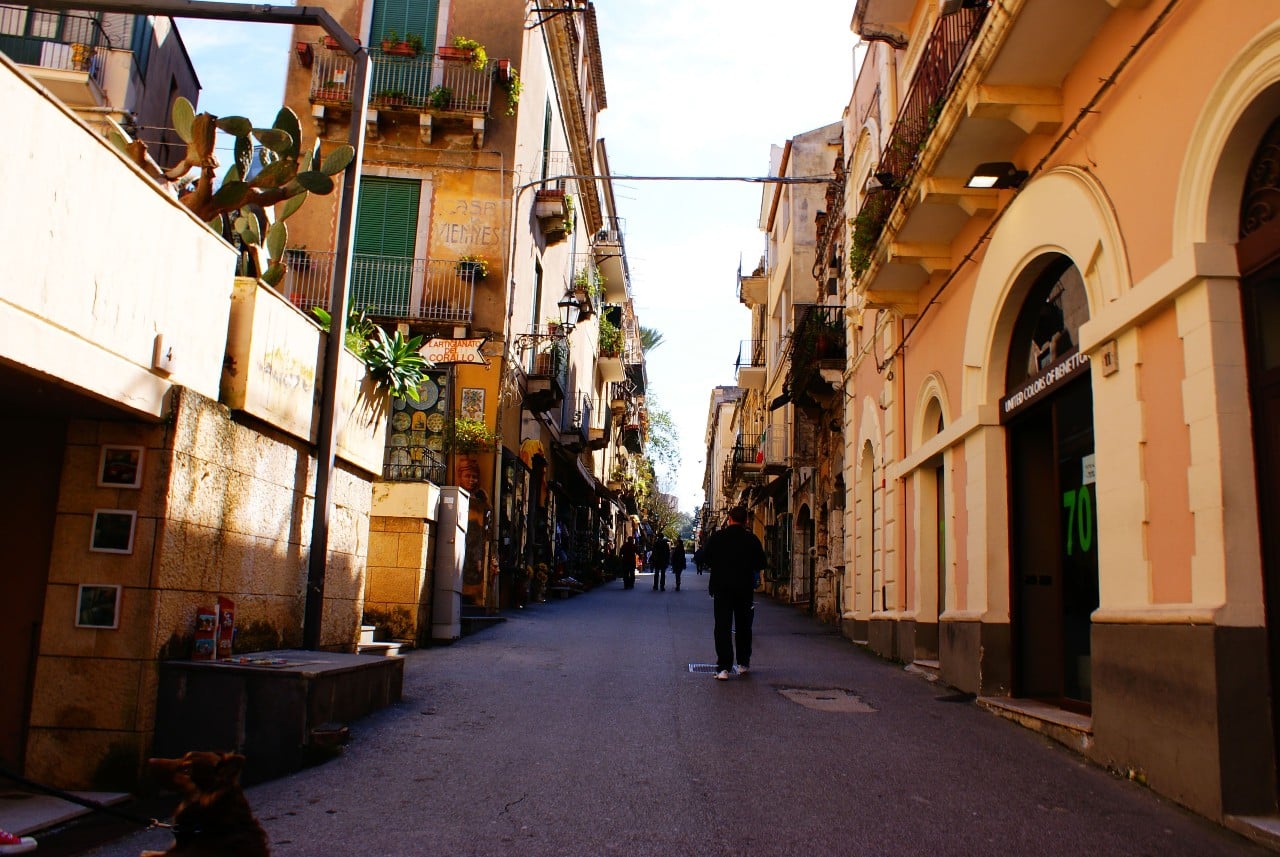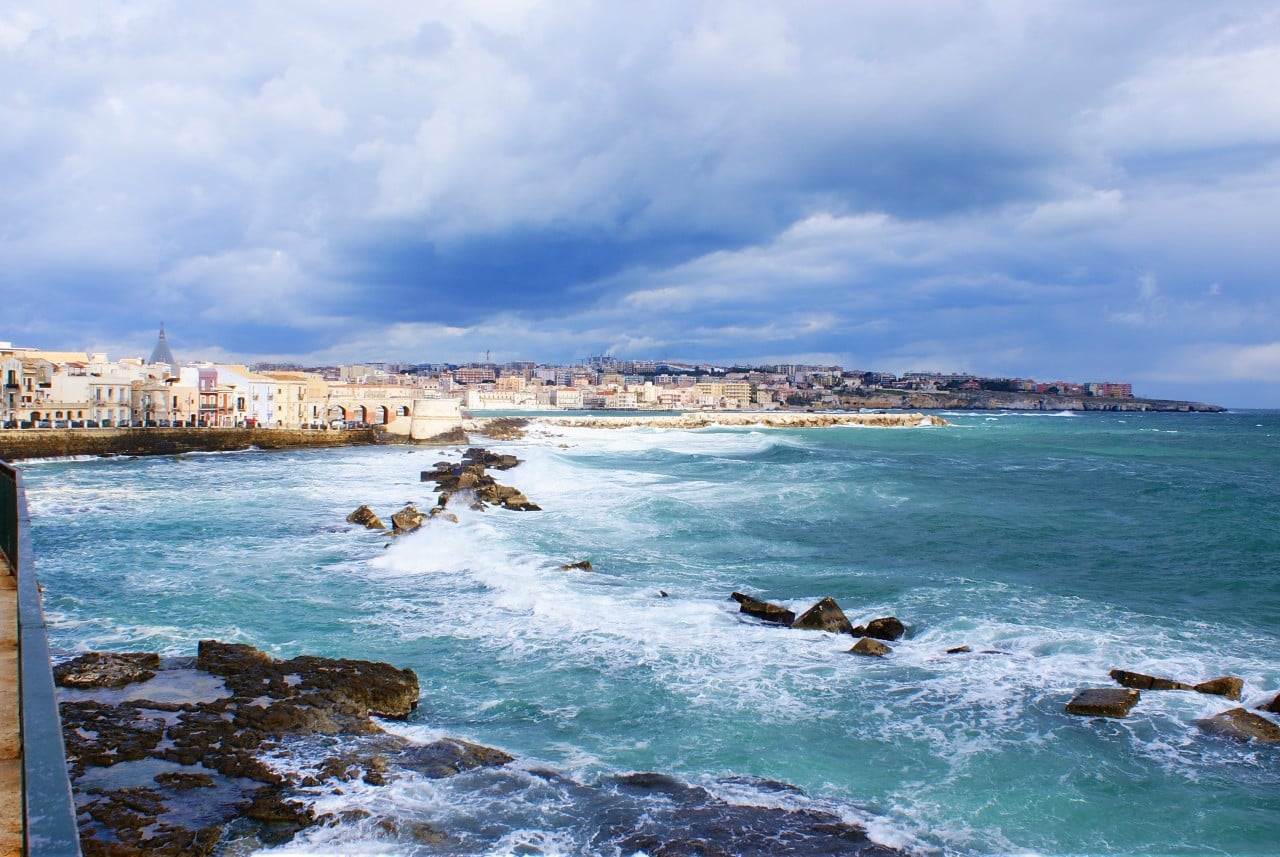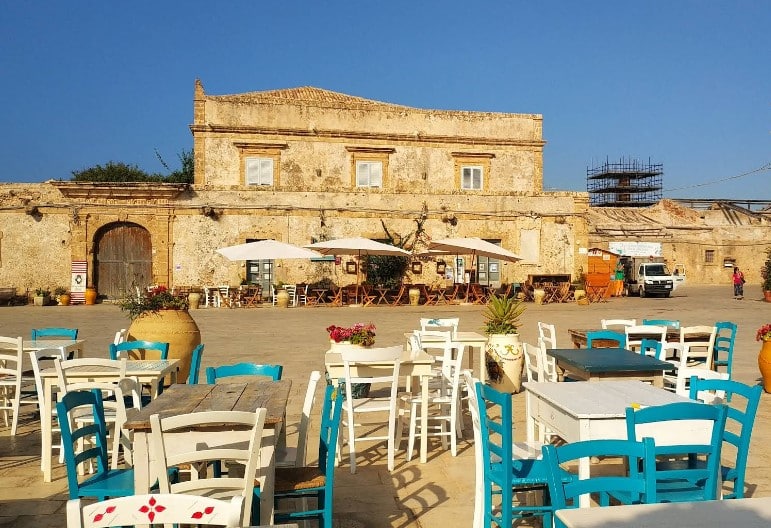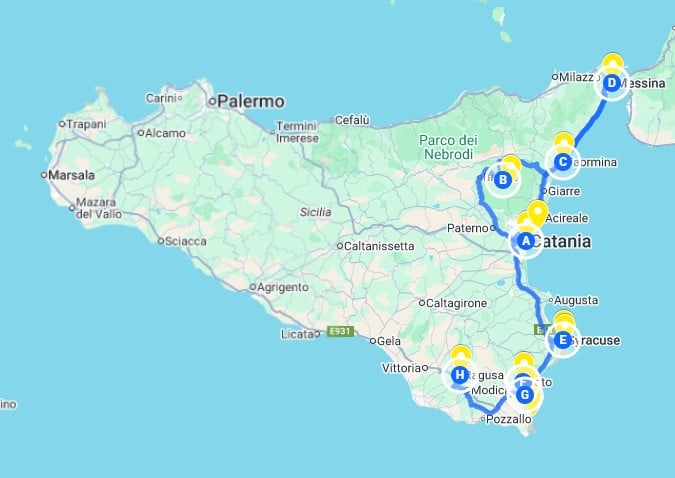One Week in Eastern Sicily: Plan Your Perfect Italian Vacation
“…On the sixth day,
Renzino Barbera – Poet, Writer, Actor
God accomplished His work
And, pleased with all the beauty
He had created,
He took the Earth in His hands,
And kissed it.
There, where He put His lips,
That’s Sicily.“
Every time I think of Sicily, I can’t help but become poetic. The place is ancient and timeless at the same time—harmonious and chaotic, thrilling and relaxing, charming and homely. Despite visiting it a few times already, I often yearn to return for one week in Eastern Sicily.
If you’d like to explore the amazing Italian island for 7 days, you clicked on the right link. I’ve prepared the following guide for any would-be visitor.
Moreover, Sicily can also be a good winter destination. You might not be able to enjoy the sea, but there are no crowds, and the prices are lower. I have prepared a detailed guide about visiting Sicily in winter, which you can read here.
This post contains affiliate links to products and services that I may be compensated for, at no extra cost to you. Read more about this on our disclosure page here.
Table of Contents
- Plan an Unforgettable One Week in Eastern Sicily
- One Week in Sicily Itinerary
Plan an Unforgettable One Week in Eastern Sicily
Why Sicily?
Sicily was a venerable old lady when Rome was barely a toddler, so recounting its history will take some time. I hope you are sitting comfortably. Ready?
It all started over 5000 years ago… What? All right, all right! I’ll give you the short version.
The first confirmed Sicilians were buddies with the Stonehenge people of Britain.
Next came the Lebanese (a.k.a. the Phoenicians and their descendants, the Carthaginians), who founded Palermo, the island’s current capital.
They were followed by the Greeks. They loved Sicily, so they moved in and founded most of its modern cities. Actually, Sicilians spoke Greek for 2000 years.
Even when the Romans eventually took over, Latin was mostly reserved for official business. Unimpressed by their new overlords, the common folk haggled in Greek at the market.
Greek was still the language of the masses when the Byzantines were kicked out by the Arabs, only to be ousted by the Normans (i.e., Vikings who lived in France for a while) a century or so later.
The subsequent German emperors were replaced by the Spanish, who, like all the others before them, were reluctant to leave the charming island. So they stayed…for 400 years.
Sicily finally became part of unified Italy in 1860.
Given its history, I am still puzzled as to why we didn’t have a godfather called Don Zorba Juan Ben Ali von Holstein-Corleone.
Long story short, in addition to its natural beauty, Sicily boasts a unique social, cultural, and architectural blend that can’t be found anywhere else in the world.

How to get to the island
Depending on where you are traveling from, there are several ways of getting to Sicily, the easiest being by air.
There are three airports on the island: one is located 32 kilometers outside of the capital, Palermo; another is near Catania, on the eastern coast; and lastly, there is an airport in Trapani, on the west coast.
Many European hubs are connected to at least one of these airports, and you can always choose a layover in Milan or Rome.
The fastest way to check your flight options is to use an aggregator such as SkyScanner.com. With its unique algorithm, you can find great connections at an affordable price. Book your flight here!
Alternatively, you can travel by car. Be aware that there are no bridges connecting Sicily to the mainland, so you’ll have to board a ferry from Calabria and cross the Strait of Messina. Check out ferry prices and timetables here!
Getting around Sicily
Getting around the island by public transportation is not impossible, but it’s not a breeze either. While the major towns are connected by train or bus, if you want to travel from one side of the island to the other or explore out-of-the-way places, that might not be an option.
That’s why we always booked a car when we visited. Furthermore, we booked guided tours when possible.
Renting a car is not hard, and I suggest you book a smaller, more compact vehicle instead of a limousine or bulky SUV; it is not only cheaper but will allow you to park easily on the island’s narrow streets.
If you would rather check public transportation options, you can always use Omio for buses and trains.
Is it safe to drive in Sicily?
While Sicilians are known for their volcanic temper, driving around is not a problem as long as you mind your own business. My husband and I drove literally tens of thousands of kilometers in the country, and we have had no incidents so far (knock on wood!).
Be warned, though, that Italians, especially in the south, are not wedded to traffic regulations. Speeding and overtaking cars in restricted areas are as right as rain as far as the locals are concerned. You, however, are well advised to stick to the rules while steering clear of reckless drivers.
Use DiscoverCars if you are looking to rent a car. They are a good aggregator, helping you save up to 70% on your car rental. Moreover, they have a pretty good cancellation policy that would give you options in case your flight or travel plans change.
Is one week in Sicily enough?

No amount of time spent in Sicily is enough if you ask me! 🙂 Even Alex has never complained, although he usually prefers the orderly North as opposed to the organized chaos of the South.
That said, spending one week in Sicily should be enough to quench your thirst for Mediterranean life—at least for a while.
By following our suggested itinerary, you’ll visit some of Sicily’s most important attractions and experience the different regions of the island.
Choose a base or hop around?
The island is relatively big, and driving from one end to the other takes over 3 hours. That’s why we are focusing on the Eastern part of Sicily in this itinerary. However, if you have more time, I have put together an itinerary for Sicily’s western part.
Additionally, you will find some other great things to add to your trip if you have a few extra days to spare.
What is the best month to visit Sicily?
I have been there in the winter, spring, and summer. We have yet to visit in the fall (another good reason to return!:)).
Based on our first-hand experience, I would say that Sicily is best in April and May. Also, I am pretty sure September is an absolutely great time to be there. The second half of March and the first half of June are not bad either.
However, I would avoid July and August if possible. The heat is unbearable, and the place is overcrowded (especially in August when most Europeans are vacationing in the sunny south).
Given a choice, I would rather visit Sicily in winter than in August. It might be colder, and swimming in the sea is not really possible, but it is peaceful (and cheaper).
When I visited in February, most days were cool but sunny, just perfect for exploring. We had rain only a couple of times, but you never know with the crazy weather these days.
The main drawback during winter is that some hotels and restaurants are closed. Still, you’ll not starve; the island is home to 5 million people, so you’ll find plenty of open places.
Palermo or Catania?
Both towns are a must-see, but when it comes to visiting the island’s eastern part, it is best to stay in Catania.
If you must choose only one, I’ll go for Catania. Palermo is an iconic place, hosting must-see sights, but it is a big city with big city problems: traffic, crowds, and petty crime…
One Week in Sicily Itinerary
To help you visualize your upcoming trip, I have prepared a map for you. Click on it for more details.
We took Catania as your base camp, because of its perfect location.
Day 1 Stay in and spend the day in Catania
Book a room for the week in Catania and use it as a base to explore the eastern coast of Sicily.
Catania is one of the ancient cities founded by the Greek settlers.
I’ll not go into historical details other than pointing out that the city saw its fair share of disasters.
It was buried no less than 17 times by the eruption of the nearby volcano, Mount Etna. Moreover, it was bombed by the Allies 87 times during World War II.
Yet, the inhabitants rebuilt it over and over again for 2800 years.
Think of its amazing resilience in the face of disaster when you wander the city’s streets.
Where to stay in Catania?
In my younger days, when I traveled on a tighter budget, I stayed a bit further from the center of Catania.
For your comfort and to make the most of your time in the city, I suggest you choose a hotel closer to the historic center, on the seafront, or in Corso Italia—the modern part of town.
Here are 3 good accommodation options:
Trìcora Sicilian B&B – is a simple and clean place, but what sets it apart from other places in Catania is the rooftop terrace! See more here!
Altevolte Rooms – set in the heart of the old town, you will take full advantage of the vibrant life of Catania. The rooms are set in a stylish old building, minutes away from the many attractions in town. See more here!
Attico MEA – close to the seafront, but also the old town, from this place you will have the best views in Catania. See more here!
Things to do in Catania

The first time I visited Catania, we had no itinerary. Actually, we just wandered aimlessly on the streets of the old city, occasionally stumbling upon notable sites.
Then, went for a stroll along the seafront, visited the parks, and savored a coffee in Catania’s main square, watching the locals going on about their daily lives.
You can approach Catania like we did, or you can prepare a plan.
Either way, I’ll share a list of notable sights worth visiting while in the magical city at the foot of Mount Etna:
- Piazza del Duomo – with the Elephant’s Fountain
- Catania’s Cathedral – the Duomo di Catania, where the famous Italian composer Vincenzo Bellini is buried.
- Go for a stroll on Via Etna – do some window shopping, admire Mount Etna, and enjoy an Italian coffee at one of the cafes.
- Gardens of Villa Bellini – one of my favorite places in town, the gardens are set on a hill, and as you climb, you can admire a perfect view of the city.
- The Roman Theatre – an impressive place dating back to the 2nd century AD. Raised upon the ancient acropolis, It could host up to 7,000 people.
- The Ursino Castle – or the Castello Svevo di Catania- dates back to the 13th century. It is currently a museum.
- Going on a walking tour is always a great way of discovering a place, especially if you are guided by a local expert.
In my opinion, spending one day in Catania should be enough. Use the next couple of days for day trips outside of town.
Day 2 – Mount Etna & Taormina
Mount Etna trip from Catania

Set between Catania and Messina, you’ll see Mount Etna from almost every point around town.
A UNESCO World Heritage Site, Etna is an active volcano and the largest of its kind in Italy.
Many people come here for a volcano hiking tour, but you can also choose a morning or sunset day trip.
You can learn the stories surrounding the volcano, dating back to ancient times, track around the craters, see the lava flow cave, and try local Sicilian delicacies.
How to get to Mount Etna from Catania
If you prefer to explore on your own rather than booking a tour, you can take a bus from Catania Central Station to Rifugio Sapienza, where you can board the cable car to the crater.
Taormina

Even on an island as beautiful and culturally rich as Sicily, Taormina stands out. It is no wonder that the city was a popular tourist destination a century before the concept of mass tourism became a thing.
Founded by the ancient Siculi, the town was later colonized by Greek settlers.
Due to its position and geography, the town sheltered retreating armies and rebellious slaves alike in its long history.
More recently, Taormina became a stronghold against a different kind of enemy: prejudice. A German photographer who moved there in 1877, Wilhelm von Gloeden, helped transform Taormina into one of the progressive leisure centers of the Western world.
Today, Taormina is one of the top tourist destinations in Southern Europe; even the powerful can’t resist its charms—the 43rd G7 Summit was held in the city in 2017.
The Carnival
When we visited in late February, we arrived just in time to participate in the Carnival.
The narrow streets were packed with people wearing masks, singing, and dancing. I loved it! It might not be as well-known as its counterpart in Venice, but it is also less crowded.
The Ancient Theater of Taormina
Visit the iconic Ancient Theater of the ancient Greek city, which is perfectly located on the seafront.
Next, stroll through the old town and stop by the Duomo di San Nicola.
If the weather is nice, cross over to Isola Bella (The Beautiful Island) and be seduced by the stunning villa and its gardens.
How to get to Taormina from Catania
Taormina is less than one hour away by car from Catania and roughly one and a half hours by train.
Day 3 – Messina & Aci Castello
Messina
Founded by Greek settlers, Messina played a central role in several events in ancient times. However, a chilling episode from medieval times is the one that moved me most.
Back in 1347, a group of ships was spotted floating outside the city’s harbor. When the terrified scouts from Messina approached them, they discovered that the entire crew and passengers were dead, their bodies covered in disgusting buboes oozing pus and blood.
If it sounds like the opening scene of a zombie movie to you…well, in a way, it was.
The unfortunate people of those zombie ships carried the Black Death to Europe, leading to a pandemic that killed between 25% and 50% of the continent’s population. Our COVID-19 seems like a minor inconvenience by comparison.
Today, Messina is one of the major cities of Sicily, its metro area boasting a bustling commercial seaport, important military installations, a thriving agricultural sector (wine production, lemon, orange, and olive cultivation), and booming tourism.
What to do in Messina
On your way to Messina, stop and explore some of the filming sites for the movie Godfather, or better yet, go on an organized tour from Catania.
Once in Messina, you’ll find joy by simply strolling around and admiring churches, impressive villas, fountains dating back hundreds of years, and the beautiful sea.
Go on an off-the-beaten-track tour of Messina and let yourself be guided behind the closed doors of this town and its Greek influences.
How to get to Messina from Catania
To reach Messina from Catania, you’ll pass by Taormina. So I suggest you cover Taormina and Messina on the same day trip, regardless of whether you go by car or train.
Aci Castello

If you’ve got a few hours to spare, Aci Castello is a perfect little stop. It’s this charming seaside town just north of Catania, famous for its medieval Norman castle perched right on a volcanic rock above the sea, it’s basically begging for a few photos!
You can wander around the castle, peek into its small museum, and then stroll along the waterfront to soak up the views and maybe grab a gelato.

Getting there from Messina is pretty easy: you can hop on a regional train heading south to Catania and get off at Aci Castello station – it’s just a short walk from the castle.
Once you’re done, catching the train back to Catania is simple, making it a stress-free half-day adventure.
Day 4 – Syracuse & Noto

Walking the picturesque streets of the sleepy town, one would find it hard to imagine that it was the New York or London of the 3rd century BC.
Archimedes had his legendary EUREKA moment in Syracuse, the inventor’s hometown. Moreover, it is said that he devised the first heat-ray weapon in history, which was used to incinerate the invading Roman ships.
Today, Syracuse is a major tourist destination, delighting visitors with numerous attractions such as the Ear of Dionysius.
What to do in Syracuse
Its impressive marble streets and buildings hint at the place’s once-important status.
I suggest the following activities while in Syracuse:
- Visit the archaeological site with the Greek amphitheater and many other Roman and Greek ruins waiting to be explored
- Explore Ortygia (or Ortigia island), the heart of Syracuse, with its bustling markets, authentic restaurants, and cobbled streets
- Go to the Piazza Duomo and the sumptuous Cathedral, a UNESCO World Heritage site
- Discover Maniace Castle in the most extreme part of the Ortygia island

How to get to Syracuse from Catania
Drive southwards from Catania, and you’ll be in Syracuse in less than an hour. Take the train, and the trip will take twice as long.
If you don’t feel like driving, book a guided day tour from Catania.
Noto

The whole town is famous for its stunning 18th-century architecture, rebuilt after the massive 1693 earthquake that destroyed much of southeastern Sicily.
Walking down Corso Vittorio Emanuele feels like a movie set, with grand palaces, ornate balconies, and the breathtaking Noto Cathedral right at the heart. Don’t miss a peek inside the cathedral if you can.

And take some time to wander the side streets – you’ll find charming cafes and gelaterias tucked into the alleys.
Day 5 – Ragusa & Marzanemi
Ragusa
When you visit Syracuse, use the opportunity to drop by Ragusa as well.
If I were a painter, I would doubtlessly be inspired to immortalize the town of Ragusa and its stone buildings perched on the top of a hill. Alas, I am but a travel blogger with a degree in finance, so you have to see it for yourself instead of admiring my work of art.
The town is split into two parts (Ragusa Ibla and Ragusa Superiore), connected by 4 bridges that cross an impressive ravine.
Visit the countless Baroque churches and wonder at the impressive interiors and architecture, or simply stroll through the streets and enjoy one of the most beautiful Baroque towns in Sicily.
How to get from Catania to Ragusa
You have the usual travel options for this part of Sicily: car or bus.
Driving is usually the easiest way. It’s about 120 km (75 miles) and takes roughly 1 hour 45 minutes to 2 hours.
Unfortunately, there’s no direct train from Catania to Ragusa – you’ll need to change at Siracusa. This makes the trip too long, with a total journey time of 3-4 hours, depending on the connections.
Buses are available from Catania’s main bus station (Autolinee Interbus or AST).
Marzanemi

If you’re coming from Ragusa, a trip to Marzamemi is a must for a relaxed Sicilian escape. It’s a tiny, colorful fishing village with a charming harbor and a timeless, laid-back vibe.
You can wander along the waterfront, watch the fishermen at work, and enjoy some of the freshest seafood at a local trattoria.
Be sure to check out Piazza Regina Margherita, the village’s picturesque square, especially at sunset when everything glows golden.
From Ragusa, it’s an easy drive of about 50 minutes, making it a perfect half-day or evening stop to soak in the coast before heading back to Catania.
Optional for when you have more time: Agrigento
Now that we have covered most of the eastern coast of Sicily, it is time to move our base to the region of Agrigento.
While today is a small city, 2400 years ago, Agrigento was one of the largest cities in Europe, having an estimated 200.000 inhabitants.
The Valley of the Temples
Agrigento is home to one of the most famous archaeological parks on the island: the Valley of the Temples.
As you’ll surely notice during your visit, the Valley of the Temple is actually not a valley but a ridge. It contains the remains of seven ancient Greek temples built in the Doric style, the largest concentration of these types of buildings outside mainland Greece.
The easiest and fastest way to visit the UNESCO World Heritage site is by going on an e-scooter tour.
Other Attractions
The remains of many other Hellenistic and Roman monuments can be seen in and around Agrigento, as well as some iconic medieval and baroque buildings.
Moreover, you don’t have to miss the Stairs of the Turks (Scalla dei Turchi), a unique rocky cliff on the coast of Realmonte.
Where to stay in Agrigento
If I were you, I would choose to stay in Sciacca.
A colorful town by the sea, one that reminds me of Procida Island off the coast of Naples, you will fall hopelessly for this place as soon as you see it.
Domus Maris Relais Boutique Hotel is a charming accommodation option close to the sea, offering scenic views. See more here!
PIN FOR LATER!








